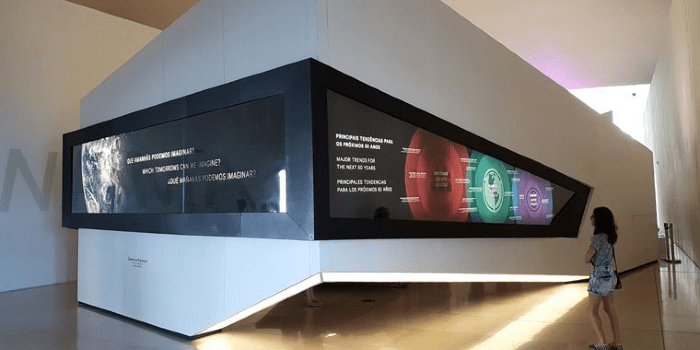 Technology has been changing society in various aspects, transforming the way it relates, providing information, providing entertainment, and changing culture and habits.
Technology has been changing society in various aspects, transforming the way it relates, providing information, providing entertainment, and changing culture and habits.
André Atique, CTS*
Analyzing holistically the hierarchy of needs of Abraham Maslow, the human being has 5 basic needs and for each of them, there are related applications, which corroborate the technology rooted in society:
1. Physiological: basic necessities for life, such as breathing, eating, drinking (iFood, Dr Consulta, health insurance applications);
2. Security: need to feel safe (cell phone location, fintech, Uber);
3. Social: need to relate to people (facebook, tinder);
4. Esteem: need to feel worthy, esteemed, self-confident (twitter, linkedin, EaD, Kindle);
5. Self-realization: You need to feel good, do what you want, notice the evolution (Instagram, Decolar, AirB&B).
To support all these changes in behavior and all these resources available to users in the form of applications and services, hardware needed to evolve. The computers that were basically used for studies and jobs today are multitasking platforms with cameras, speakers, digital recognition and high processing power.
In the same way, cell phones have evolved by bringing even more resources than conventional computers, taking photos, making movies, paying bills, helping to invest in the stock market, organizing appointments, protecting movie tickets, weather, GPS, e-reader, surfing the Internet... and still make calls. All this hardware power gave people the ability to make use of technology at its highest level, interacting in all spheres of their lives as explained above.
By exploring the context of communication, people understood that they are no longer attached to the barriers of distances, being able to talk and see each other, making use of audiovisual resources here. Knock [2] says that virtual communication is more complex than physical communication because it requires a greater cognitive load (attention, perception, memory, creativity ...), but that everyone knows the real environment and this facilitates adaptation to the use of media.
The context of social isolation meant that activities that were previously unimaginable could be carried out remotely. Happy hours, weddings, birthday parties, religious services, social gatherings are some examples of this. Technology through audiovisual resources has made people in the same city as close as people in different countries and has brought all age groups together with the simplicity of connection.
The evolution in society's interaction with technology has also impacted the economic chain. In the entertainment industry, for example, companies like Netflix, Amazon, and YouTube have shortened the path between viewer and entertainment content producer, analyzing users' profiles and offering specific material according to their choices and tastes. Welcome to the era of technological macrotransition.
AV technology in corporate spaces.
Understanding this reality of technology in people's lives and how it facilitates communication, it would be foolish to conclude that the corporate environment would remain intact. Technology for people means that evolution, innovation, renewal, information and environments that do not accompany this integration, from the physical to the digital, are separated from reality.
Within a recessionary economy scenario, due to the social isolation caused by COVID-19, how will routine return in an environment where people need to relate, but with restricted physical contact? The answer is connectivity all over the place! For the first time, executives and office workers are prioritizing technology, as it has become mandatory for the exercise of their activities. The relationship is essential for business to continue and technology allows people from different and/or equal organizations to meet in a virtual room interacting by voice and video. The more resources there are in communication, the better it will be. Remote meeting platforms have made people even more productive by shortening distances and redeeming time with commuting. They are all just a click away.
The home office will change a lot in corporate environments. Speaking of physical space, taking as an example a company with about 1000 employees, if you need a workstation for everyone, as well as meeting rooms and the like, the company has a certain cost. But if this company promotes a 20% turnover of employees in the home office once a week, you can save on all your fixed costs related to rent and bills coming from this space.
According to research conducted in 400 corporate offices in Brazil, 95% of them intend to explore remote work more, but not migrate completely [3]. In this scenario, to adapt to the new reality, the company will need to structure a home office policy and manage workstations, without giving physical space to employees, but digitally programmed rotating places. This administration is possible through programming systems for desktops and meeting rooms where the user defines, within the company's policies, the days he will go to the office and on which workstation he will be.
Another point is about the format and technologies needed to hold a meeting. Currently, most people are adapted to remote meeting platforms (Skype, teams, zoom, etc.), so the challenge is to bring this reality to the concept of the project. Technology has also advanced in this regard, providing solutions where the user arrives with his computer to the meeting room, connects it via HDMI and USB in the interface of the table and uses his usual videoconferencing platform with professional microphones, professional speakers and a suitable screen. in the living room. This, in addition to being a very current resource, is cheaper than conventional videoconferencing systems. This is already one of the most used concepts in current projects.
Speaking of hardware, a third trend in companies is to try to escape connectivity issues. There are several models of computers and it is common to find video connections of the widest possible variety (HDMI, VGA, DVI, DisplayPort, USB-C, etc.). In addition to computers, users also have the need to wirelessly stream cell phone content on a screen. To solve this problem, the audiovisual industry brought hardware where the user connects wirelessly and can stream the content of their computer or cell phone to any type of screen, such as televisions, monitors and projectors.
But what about public spaces, facades, common areas, lobbies and corridors? The trend is for them to become storytellers, harmonizing technology and architecture.
AV technology in public spaces.
There is a booming concept in architecture called "Media Architecture". This defends the conception of a space in an integrated way with technology. Brynskov et al. says that media architecture is the "integral concept encompassing the design of physical spaces on an architectural scale, incorporating materials with dynamic properties that allow for dynamic, reactive, or interactive behavior" [4]. The idea is to promote this integration in such a way that the space can communicate with users, providing coordinated and assertive information to the public, interactive and having the technology aesthetically incorporated into the environment.
Digging deeper into the concept, what would be a bad application and a good application of media architecture? A bad app would be a TV hanging on the wall with pay TV content, out of harmony with the environment, both in terms of aesthetics, purpose and content. For Webster, "digital installations should be treated as an architectural material that should be handled carefully, well designed and with a purpose" [5]. A good application simplifies, excites and expresses a narrative of space, a situation that is located in the new office of Serasa Experian, in Torre Sucupira, in the city of São Paulo, Brazil. The goal of the project was to transform the lobby into an environment that would tell the story of the company and affect everyone. For this, an LED panel was mounted on the ceiling and wall, transforming the room into an immersive environment in this concept. As a result, employees began posting spontaneous videos in the room on social media, increased visits to the space, and the president participated in a video about the project where he appears on the panel telling about the company's history, talking about the strong brand it represents, and talking about delighting customers. The elevator room became the star of the project, as it united the concept of space with technology.
Every company wants to show an updated, technological, innovative and inspiring company image, but how does it do it? To help explore the concept a bit more, Hoggenmueller et al. brings 5 classifications with their definitions of media architecture [6], namely:
1. Physical integration of exhibition technology into architecture: it is the use of technological components as part of the concept of space. An example of this is the museum of tomorrow in Rio de Janeiro - Brazil, with large multimedia panels that make up an immersive and imposing environment with each part telling part of the same story.
2. Aesthetics of the environmental material: Worry about the composition of the material and how it will integrate with the environment to be part of it. Looking for a new way to communicate with the public and also a modern look, the Kunsthaus Graz Museum of Modern Art in Austria used a stage lighting system throughout its "shell", texting the public or just being funny;
3. Communicative and informative aspects of media architecture: information panels on roads, streets and squares have their function, however, it is necessary to consider not only the material of communication, but also how to communicate with the public, looking for new and creative visual representations or transforming public spaces into augmented playful environments. To illustrate, imagine an external lighting of a building that changes color with buttons made available to the public, providing interaction, novelty and promoting the company;
4. The consideration of contextual aspects plays an important role for successful implementation in public spaces: following the concept of situated urban visualizations, Vande Moere and Hill emphasize that embedded visualizations in the form of physical screens must respect and respond to the characteristics of surrounding location, providing information related to the local context and offering socio-cultural relevance to the local population;
5. Media architecture facilitates and enhances social interactions in the urban environment: As interactive experiences are becoming more prevalent in the built environment, interactivity has also become an important aspect of media architecture research. However, we do not see interactivity as a principle in itself. Instead, we suggest that for interactive media architecture to be successful, it must comply with the principles mentioned above. An exhibition that presents interactive content related to the sociocultural context of the place can be an idea of this context;
It is concluded that society is technological and all spheres are being transformed according to the macrotransition represented by this era. Both enclosed and public spaces are adapting to the demands of humanity, increasingly adapted to the remote, the virtual, causing innovation and interactivity. Spaces must also be well harmonized so that this reality is pleasant, exciting and generates even more engagement with people. So it is through this symbiosis of architecture with technology that one can find the best answer for the public and private spaces of the future.
*By André Luis Atique, Presale Manager of Eletroequip / AW Digital.





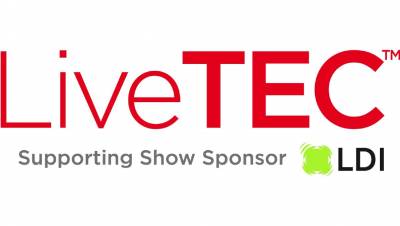
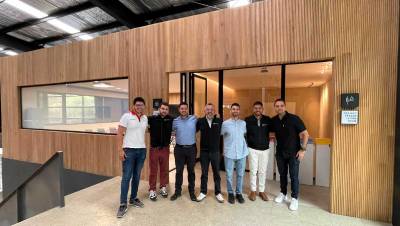
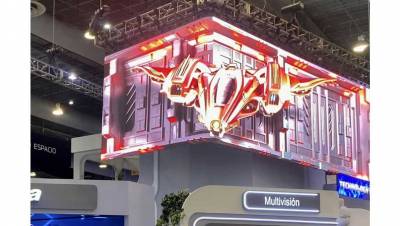
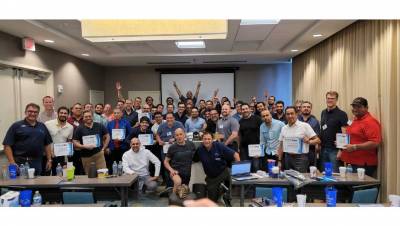


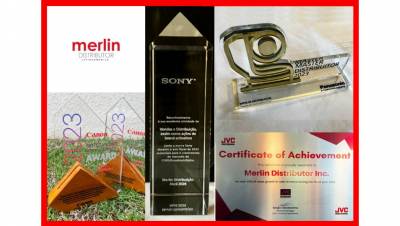














Leave your comment